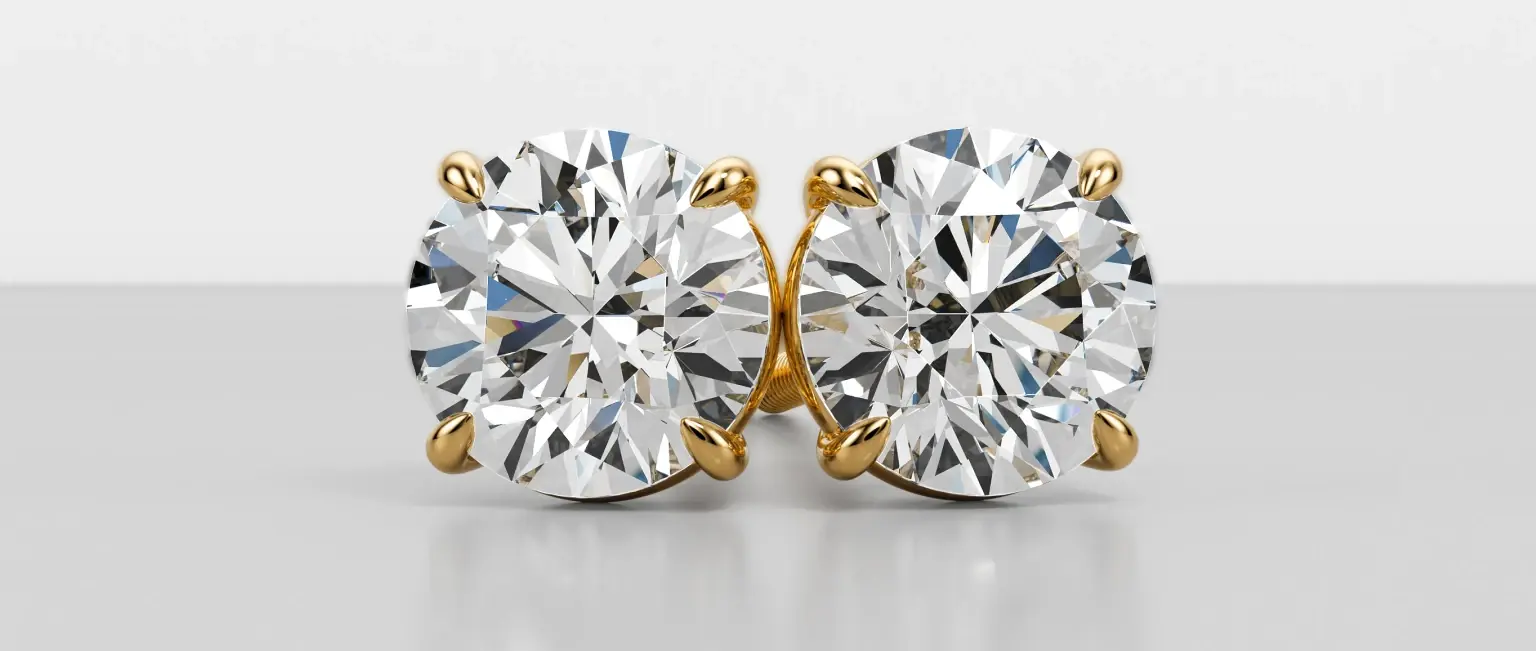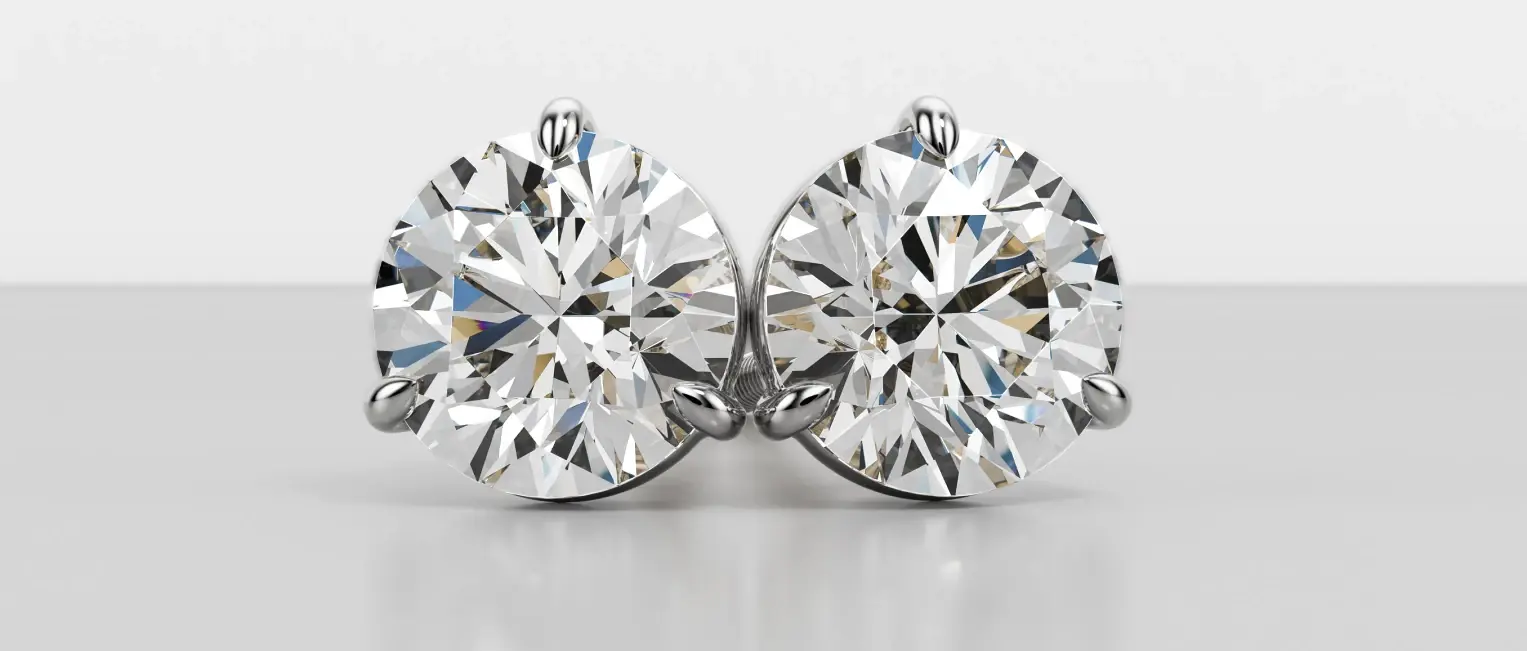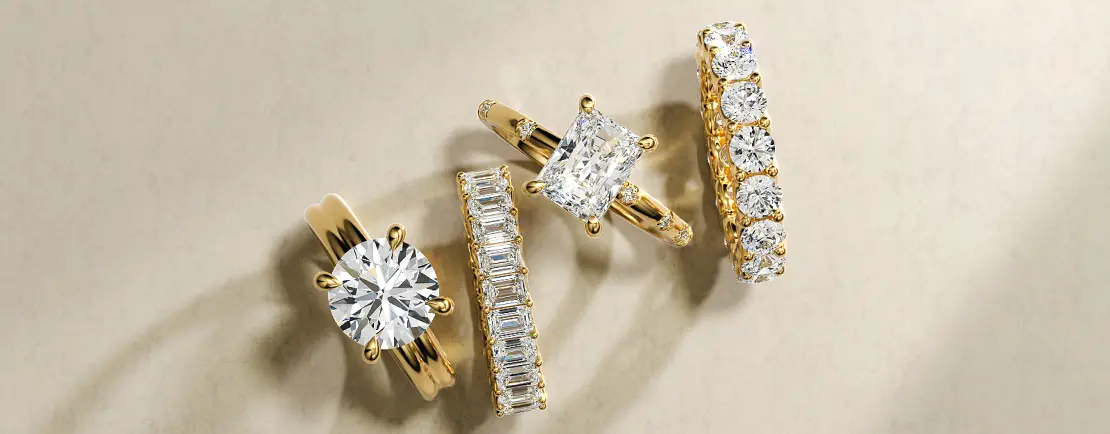Diamonds form naturally in all different colors. Shades of light yellow are the most common, though all the colors of the rainbow and white, black, and gray can be found. The gemologists who grade diamonds use a list of 27 color hues across the rainbow spectrum. From red to purple and everything in between, the 27 color hues distinguish between specific colors like reddish-orange and orangish-red. Added to these rainbow colors are shades of white, gray, black, pink, and brown. Diamond hues imitate the wide variety of the world’s colors.
Colored diamonds are often given special names. For instance, few people like the sound of a brown diamond. So light brown diamonds are referred to as “champagne,” orangish-brown diamonds are called “cognac,” and deep brown diamonds are called “coffee.” Diamonds of exceptionally bright color receive names like “fancy vivid yellow.” These descriptive adjectives are a technical way to describe a color’s intensity.
Diamonds can acquire a hue in a variety of natural ways. Understanding where the colors come from helps begin with the essential natural science of diamond formation.
Diamonds are made of carbon, an element capable of forming crystalline structures called a diamond lattice. A pure carbon diamond lattice will start if conditions are perfect, and the diamond will be 100% clear and colorless. However, diamonds are formed with additional chemicals and under geologic pressures that impact structure in the natural world. Color comes from these other chemicals and structural changes to the diamond lattice.
The most common chemical additive is nitrogen which will form a yellowish diamond. Blue diamonds indicate the presence of boron. Colors like red, pink, and some brown diamonds result from geologic pressure on the diamond lattice, called plastic deformation. Green diamonds are caused by structural changes but involve radiation's impact. Sometimes, more than one of these unique conditions co-occurs, producing a greater variety of shades.

The most common chemical additive is nitrogen which will form a yellowish diamond. Blue diamonds indicate the presence of boron. Colors like red, pink, and some brown diamonds result from geologic pressure on the diamond lattice, called plastic deformation. Green diamonds are caused by structural changes but involve radiation's impact. Sometimes, more than one of these unique conditions co-occurs, producing a greater variety of shades.
Several storied diamonds enjoy fame because of their vibrant color.
The bluish-green Orloff diamond resides in the diamond treasury of Russia and once belonged to Catherine the Great, who had it mounted in the Imperial Scepter.


The Golden Jubilee diamond is a fancy yellow-brown diamond that was blessed by the Pope, the Supreme Imam, and the Supreme Buddhist Patriarch before being set in the royal seal of Thailand.
The peach-pink Hortensia diamond adorned Napoleon’s ornamental shoulder braid in the First French Empire.


The fancy vivid blue diamond known as the Heart of Eternity is rumored to have been purchased by Floyd Mayweather, the famous boxer.





























